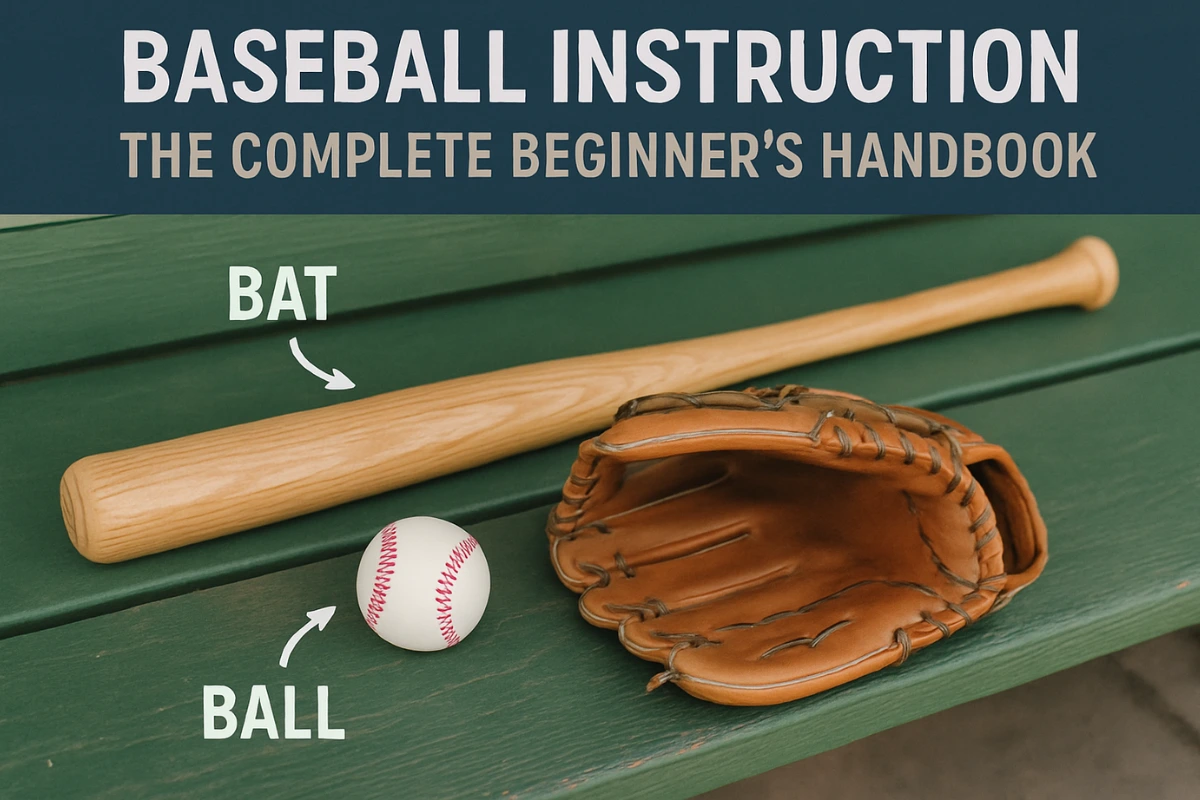🏟️ Introduction
So, you’re curious about baseball? Whether you want to join a league, play catch with friends, or understand what’s going on during MLB season—this guide’s got your back. Baseball is more than just America’s pastime—it’s a fun, strategic, and exciting sport that anyone can learn. baseball
⚾ Understanding the Basics
🏟️ Baseball Field Overview
A baseball field looks like a big diamond, and that’s actually what it’s called—the diamond. It consists of:
- The majority of the action takes place in the infield, which includes the bases and the pitcher’s mound.
- Outfield: The grassy area beyond the infield
- Bases: First, second, third, and home plate—run these to score! baseball
🧢 Baseball Equipment Essentials
🪵 The Bat
Usually made of wood or aluminum. Pick one that is balanced and comfy in your hands.
⚾ The Ball
It’s white, stitched, and slightly hard. You’ll use it for throwing, pitching, and hitting.
🥎 The Glove
Used by fielders to catch balls. Each position has slightly different glove styles.
🦺 Protective Gear
Comprises catcher’s equipment, batting helmets, and occasionally chest guards.Safety first, always!

📜 The Rules of Baseball
👥 Number of Players
Nine players from each squad are on the field at once.
🎯 Objective of the Game
Score more runs than your opponent by hitting the ball and rounding all four bases to reach home.
📈 How Scoring Works
To score a run, a player must first get on base and then make it to home plate.
🧍♂️ Positions in Baseball
🏃♂️ Infield Positions
- Pitcher: Throws the ball to the batter.
- Catcher: Receives the pitch and guards home plate.
- First Baseman: Handles plays at first base.
- Second Baseman: Covers second base and nearby ground balls.
- Shortstop: Usually the fastest player, he plays between second and third base.
- Third Baseman: Guards third base and deals with fast grounders.
🌳 Outfield Positions
- Left Fielder: Covers the left side of the outfield.
- Center fielder: covers the most ground and is frequently the fastest.
- Right Fielder: Has a strong arm for long throws. baseball
🏏 Learning to Bat
🧍 Batting Stance
Stand sideways with your feet shoulder-width apart. Knees bent, eyes on the pitcher.
💥 Swing Mechanics
Keep your hands level and swing through the ball, not just at it. Use your hips for power.
🔥 Tips for Hitting the Ball
- Watch the pitcher’s release point.
- Don’t swing at every pitch.
- Practice with a tee or soft toss.
🎯 Learning to Pitch
⚙️ Basic Pitching Techniques
Focus on grip, stance, windup, and release. Start slow and build control.
🌀 Types of Pitches
- Fastball
- Curveball
- Slider
- Changeup
📈 Pitching Drills
Practice with a target. Chalk a box, use a net, or even a tree!
🎽 Learning to Catch and Throw
🎯 Proper Throwing Technique
Rotate your hips, take a step with your opposing foot, and then extend your arm.
🥎 Catching Grounders and Fly Balls
Stay low for grounders and use two hands when possible. For fly balls, track with your eyes, not just your glove.
📋 Drills for Throwing and Catching
- Wall throws
- Partner toss
- Pop fly tracking
🏃♀️ Base Running
🕰️ When to Run
Run when the ball is hit or when stealing is a good play (watch the pitcher’s movements).
🎭 How to Steal a Base
Take a lead, watch the pitcher, and GO at the right moment!
💨 Sliding Techniques
Feet-first is safest. Hook slide if you want to avoid a tag. baseball
🎲 Offensive and Defensive Strategies
⚔️ Offensive Plays
- Sacrifice bunts to advance runners.
- Hit-and-run plays to confuse the defense.
🛡️ Defensive Plays
- Turning a double play.
- Outfielders shifting based on the batter’s tendencies.
🎮 Playing a Game of Baseball
📆 Innings Explained
Games typically have 9 innings, each divided into two halves: top and bottom.
🔁 Turn Rotation
Teams alternate between batting and fielding each inning.
⚖️ Umpire Roles
They call balls, strikes, outs, and keep everything fair.
🛠️ Practice Drills and Tips
🧍 Solo Practice Ideas
- Hit off a tee
- Throw against a wall
- Practice running bases
👥 Team Practice Drills
- Scrimmages
- Relay throws
- Fielding circuits
🚀 How to Improve Fast
Consistency is key. Practice 3-4 times a week and keep it fun.
🚫 Common Mistakes to Avoid
- Swinging at every pitch—patience matters
- Not running hard—always hustle
- Overthrowing—aim for accuracy first
🧑⚖️ Baseball Etiquette and Sportsmanship
- Shake hands after games.
- Respect umpires’ calls, even if you disagree.
- Don’t showboat after a home run—stay classy!
📈 Advancing Your Skills
🧑🤝🧑 Joining a Team or League
Look for local youth or adult leagues—there’s something for all ages.
🧑🏫 Hiring a Coach
Private coaching can elevate your skills fast.
📺 Watching Pro Games
Watch MLB games and learn how the pros do it—strategy, technique, and attitude.
🏁 Conclusion
Baseball is one of those sports that combines brain and brawn—part strategy, part skill, all heart. Whether you’re just starting or dreaming of home runs, remember: practice, patience, and passion will take you far. Now grab your glove, hit the field, and let’s play ball! baseball
❓ FAQs
Q1. At what age is it best to start playing baseball?
Kids as young as 4-5 can start in tee-ball, but it’s never too late to learn!
Q2. Can I play baseball without a team?
Absolutely. You can practice hitting, catching, and running solo or with a buddy.
Q3. How long does a typical baseball game last?
A 9-inning game takes, on average, 2.5 to 3 hours to complete.
Q4. What’s the best way to teach kids baseball?
Keep it fun, focus on the basics, and don’t stress over mistakes—they’re part of the learning process.
Q5. Is baseball hard to learn?
It has a learning curve, but with consistent practice and a positive attitude, anyone can learn to play.
